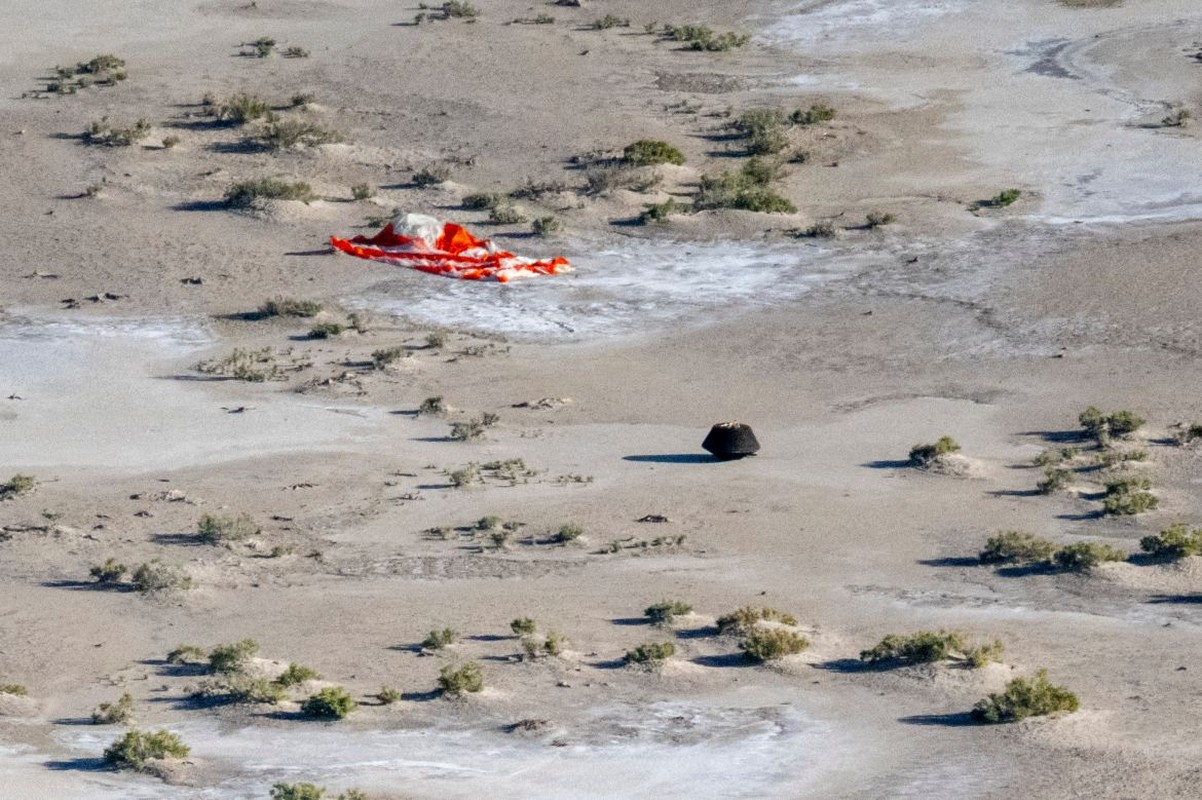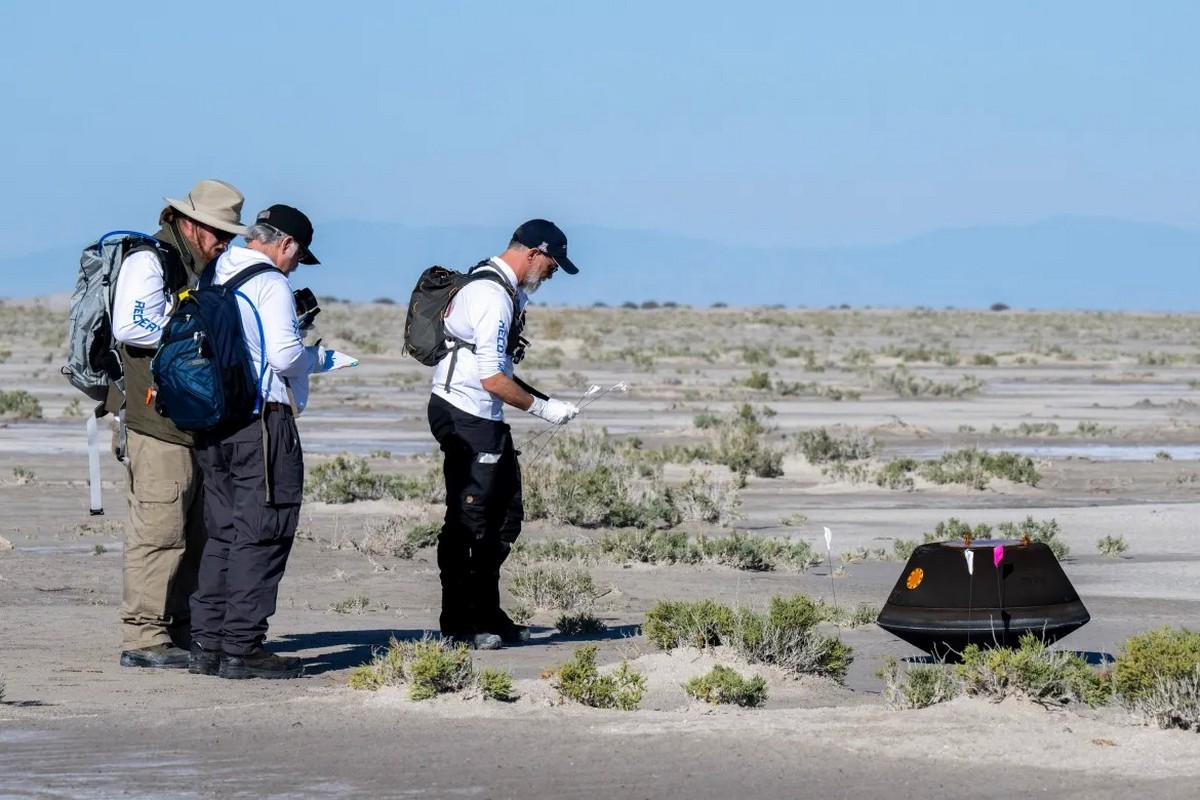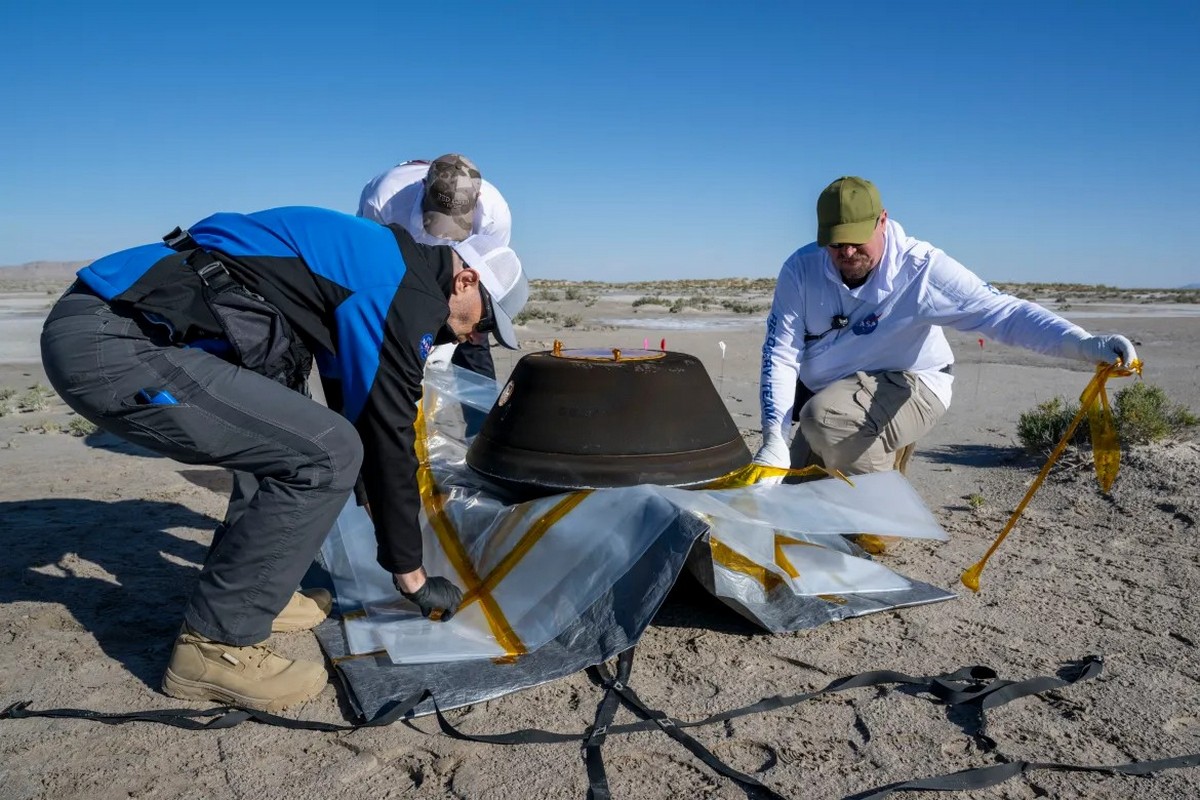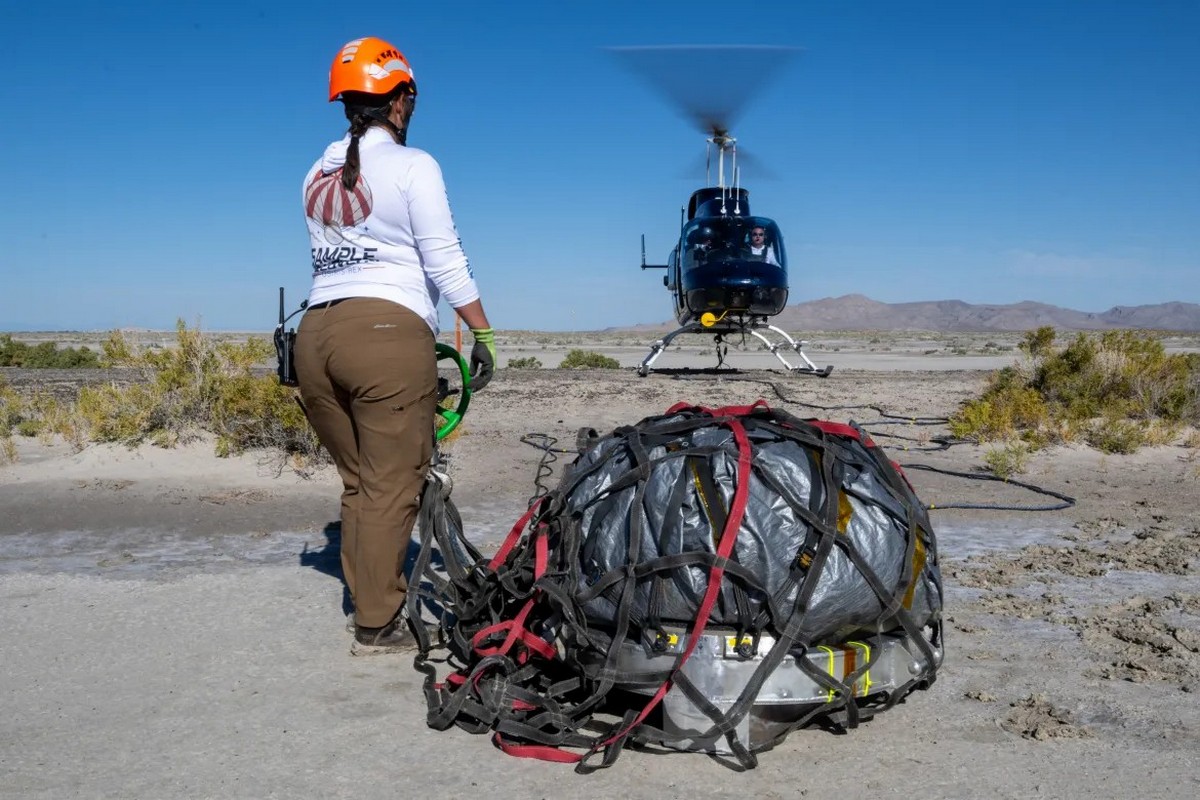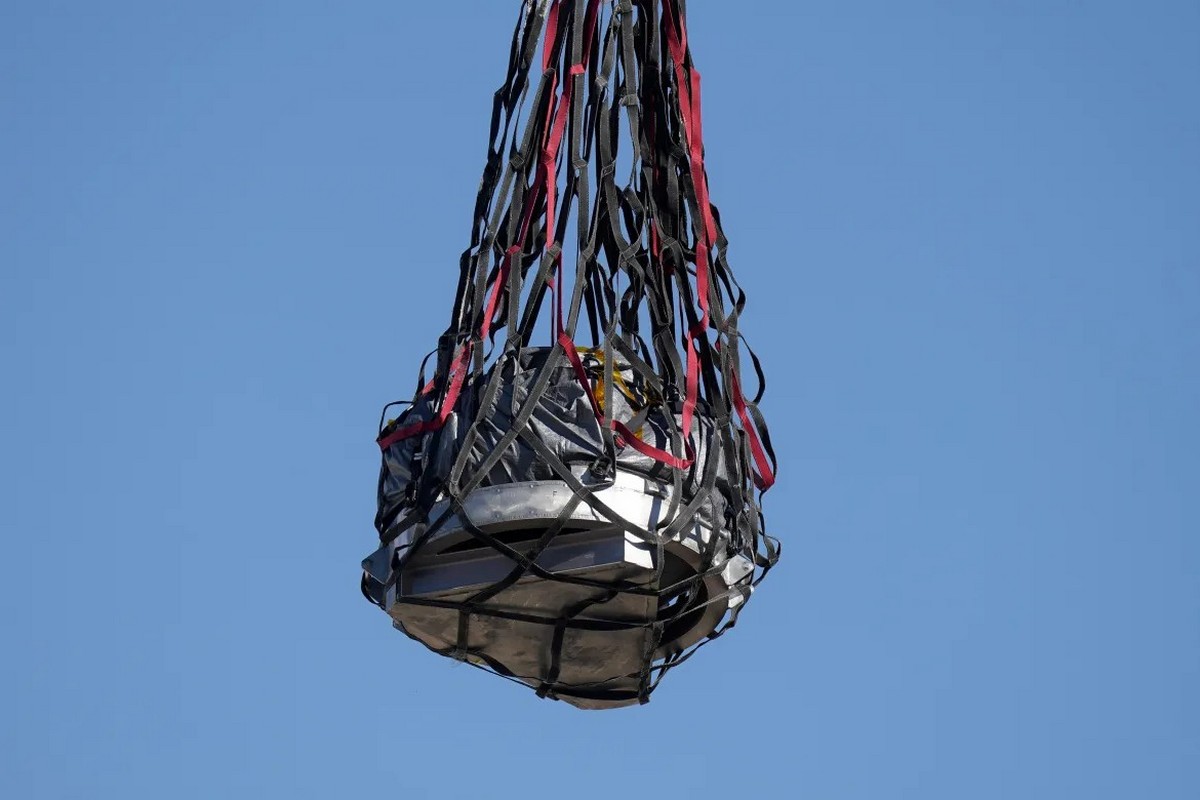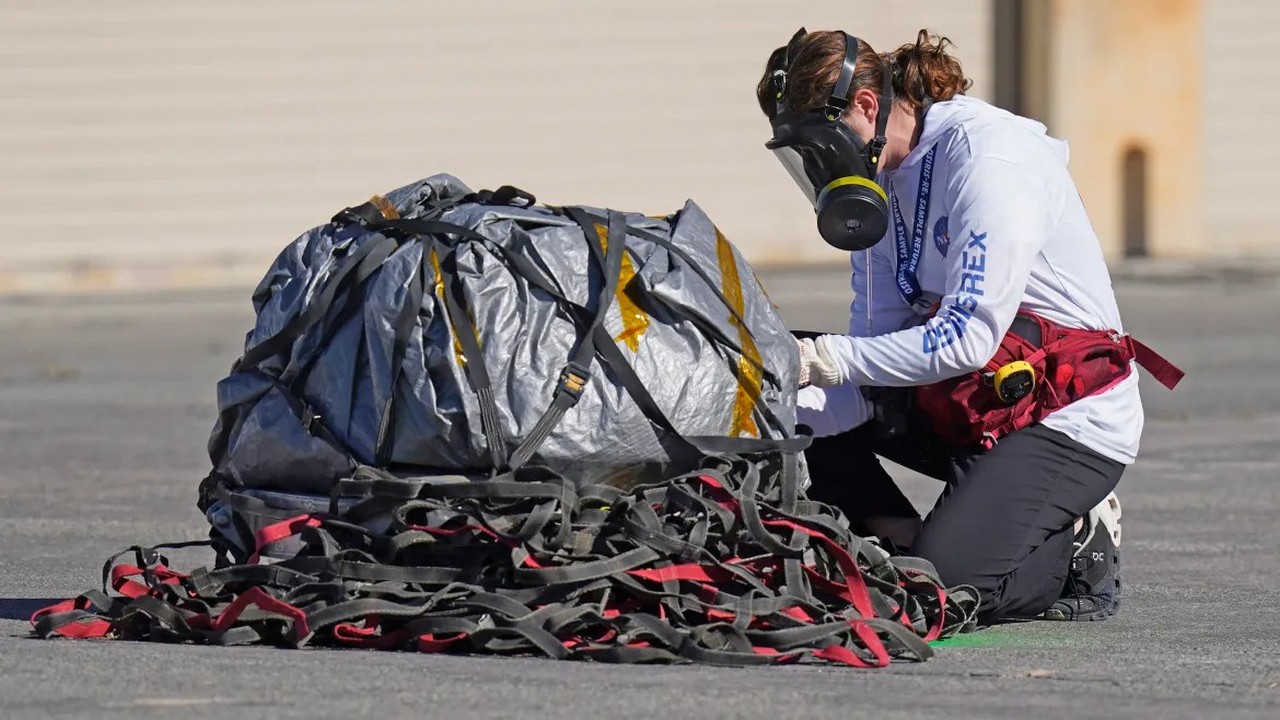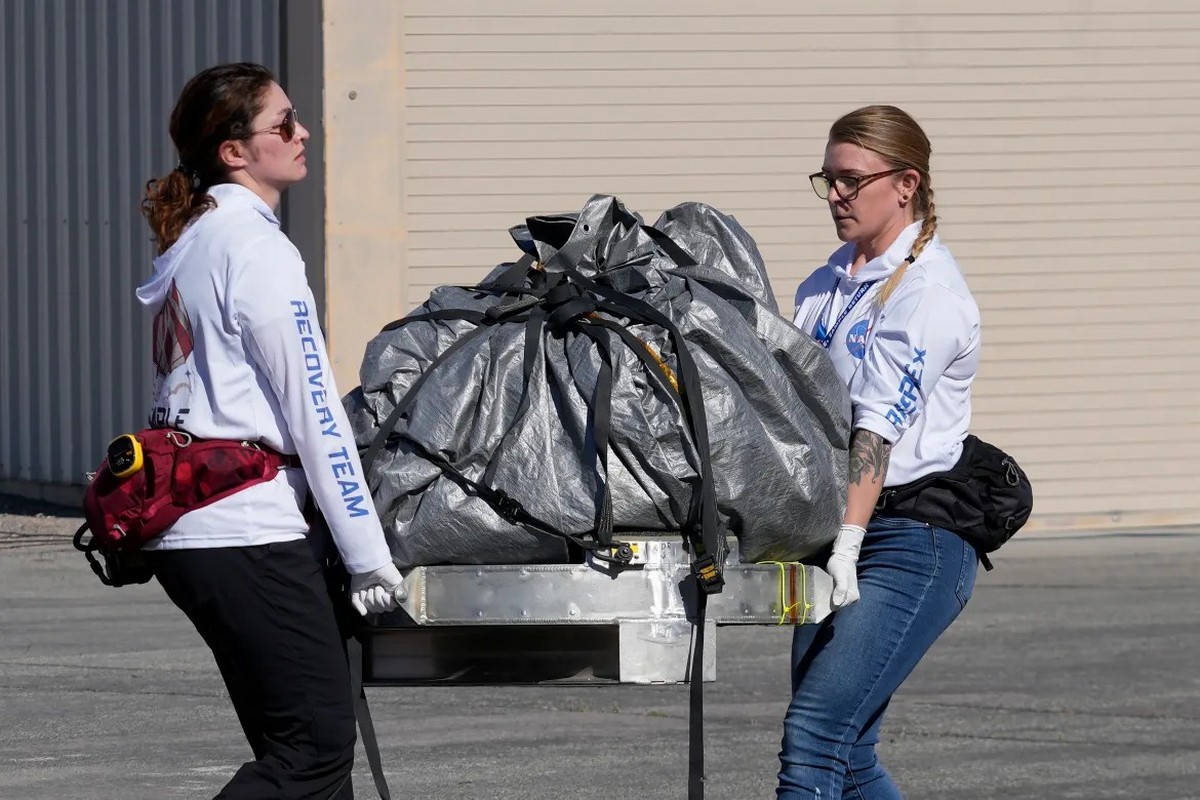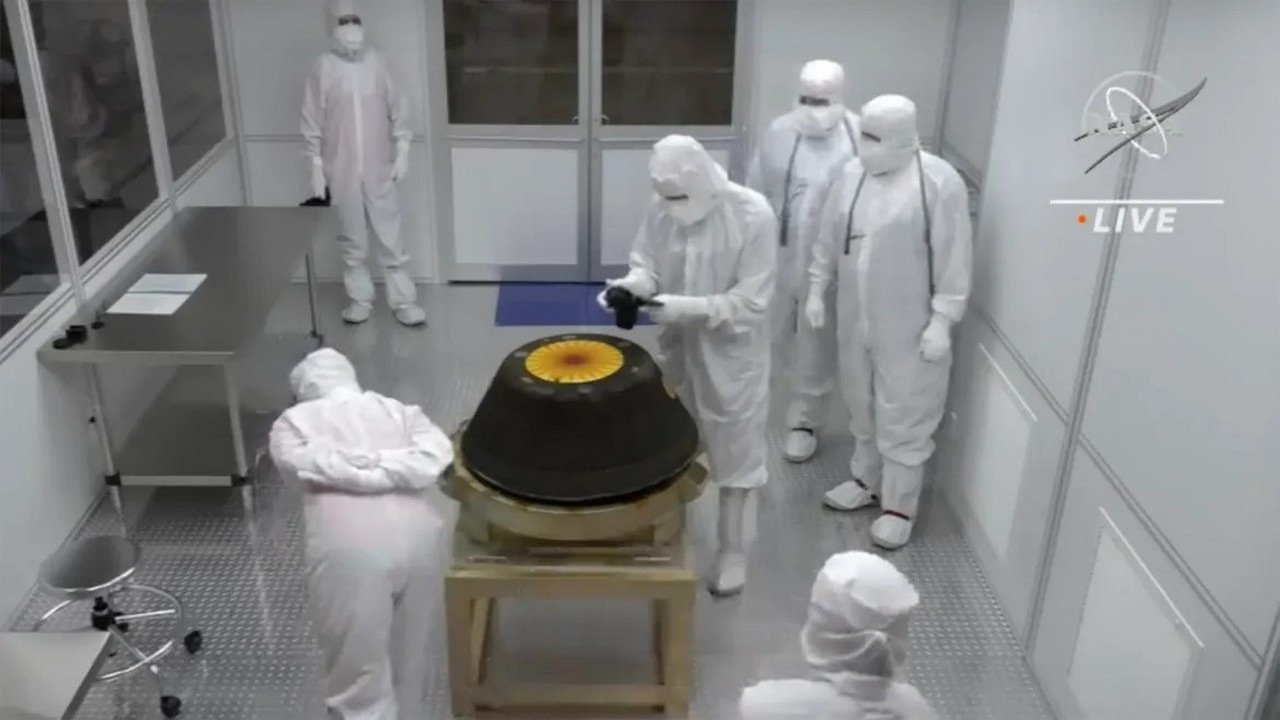A seven-year space voyage came to its climactic end when a NASA capsule landed in the desert in the US state of Utah, carrying to Earth the largest asteroid sample ever collected.
Scientists have high hopes for the sample, which landed on Sunday, saying it will provide a better understanding of the formation of our solar system and how Earth became habitable.
The 6.21-billion-km (3.86-billion-mile) journey marked the United States’ first sample return mission of its kind, the US space agency said in a post on X, formerly known as Twitter.
NASA chief Bill Nelson hailed the mission and said the asteroid dust “will give scientists an extraordinary glimpse into the beginnings of our solar system”.
The OSIRIS-REx probe sent its sample capsule into a fiery, perilous descent through Earth’s atmosphere, but NASA managed to engineer a soft landing at 8:52am (14:52 GMT) in the military’s Utah Test and Training Range.
Four years after its 2016 launch, the probe had landed on the Asteroid Bennu and collected what NASA estimated is 250g (9oz) of dust from its rocky surface.
OSIRIS-REx released its capsule from an altitude of more than 107,826km (67,000 miles).
The fiery passage through the atmosphere came only in the last 13 minutes as the capsule hurtled downward with temperatures of up to 2,760 degrees Celsius (5,000 degrees Fahrenheit).
 Alghadeer TV Alghadeer TV
Alghadeer TV Alghadeer TV
